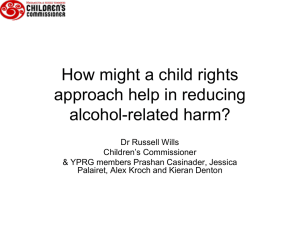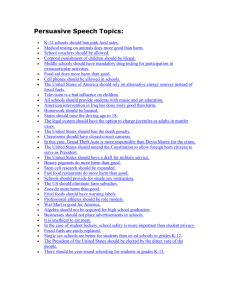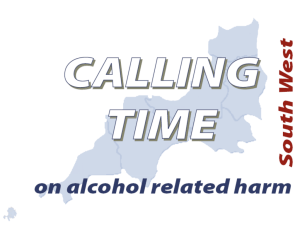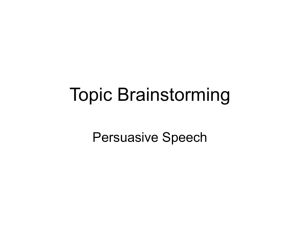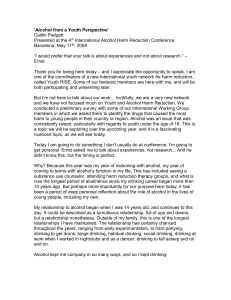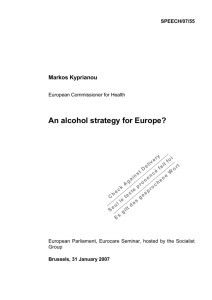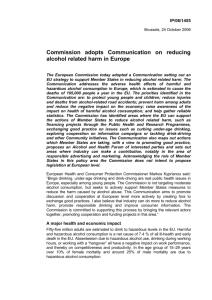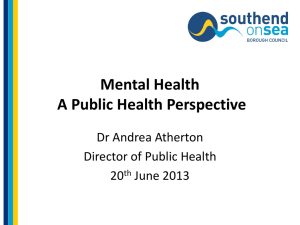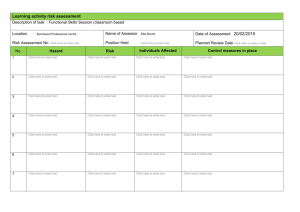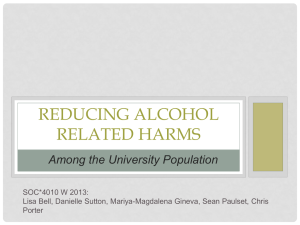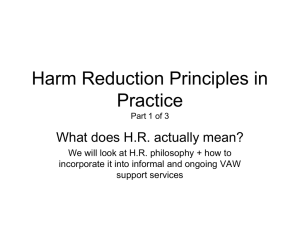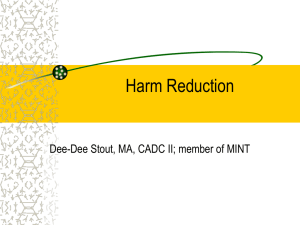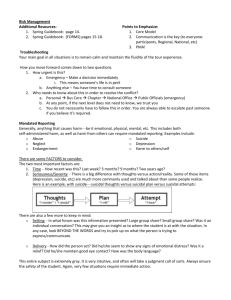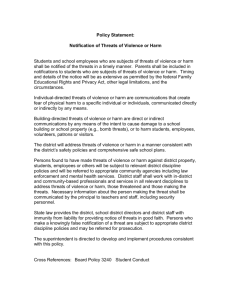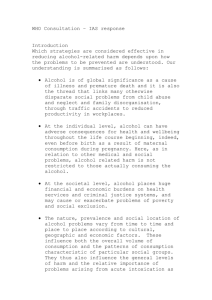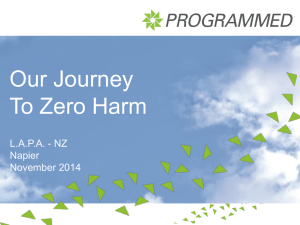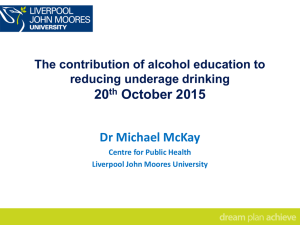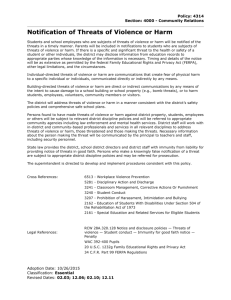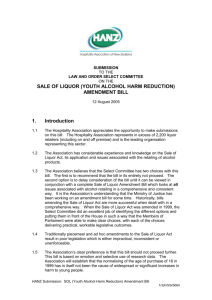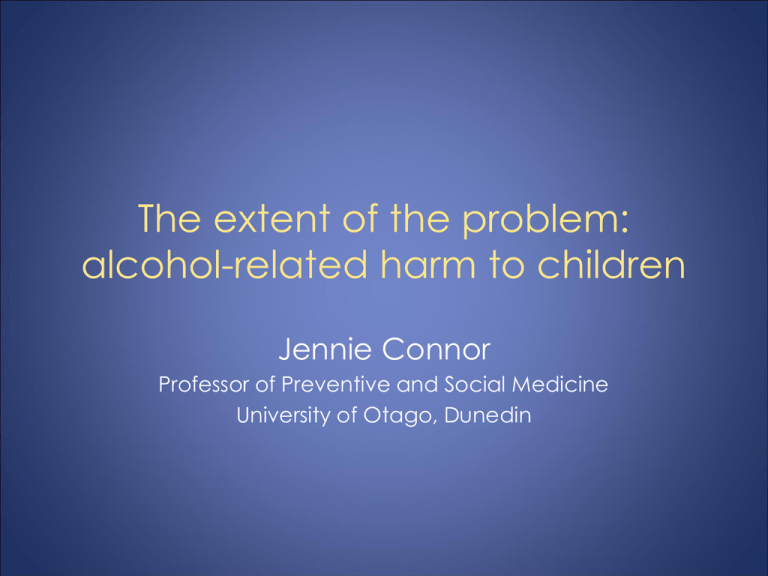
The extent of the problem:
alcohol-related harm to children
Jennie Connor
Professor of Preventive and Social Medicine
University of Otago, Dunedin
Physical violence
Sexual violence
Traffic injuries, fires
Harm from other
people’s drinking
Child abuse and neglect
Wellbeing of drinkers families
Effects on co-workers
Property damage,
neighbourhood amenity
Measuring alcohol harm to
children in NZ
Car crash injuries and Fires
Under 15 year olds:
– 12% of all traffic crash injuries were alcohol related
– Average of 5 children killed and 376 others injured each
year
– 90% of children killed and 75% of those injured were in the
same car as the drinking driver
Connor et al. Accid Anal Prev 2009;49:1099-1103
Child abuse or maltreatment
2006 CFYS
• 50,301 care and protection notifications
• 12,453 found to have been sexually, physically or emotionally
abused or neglected (one in four)
• 21 per 1000 NZers 0-16 years
• In Australia 33% alcohol use is associated with the seriousness of
the outcome. (42% of protection orders) (Laslett 2010)
• In NZ this would be 4109 cases in a year
2006 Police data
• 15% of victims in family violence incidents were children
• Alcohol was a contributing factor to 29% of all family violence
incidents – not reported separately for children
2002-2006 Family homicides 38/141 were children
• Half of child homicides had alcohol +/or drug involvement
(Martin &Prtichard 2010)
Fetal alcohol spectrum disorder
• No reliable data on prevalence or severity in
NZ
• No organised screening of children
• Surveys of drinking in pregnancy suggest >1/4
babies exposed to some alcohol
• US data: 1% FASD (May and Gossage 2001); 25% (May et al 2009) 600-3000 per year in NZ
• Much more drinking in pregnancy in NZ than
US
• 12% of NZ pregnancies at high risk of heavy
alcohol exposure in early gestation (Mallard
2012)
Evidence not found
• No reliable data on harm to children reported,
including FASD
• Child, Youth and Family Service
– Unable to access any data because it was not “accurate
or reliable” enough for our purposes
• Some data extracted on crashes and fires
• No accessible data on alcohol and domestic
violence incidents where children were present
• Emergency Departments
– Alcohol data not systematically collected even for patients
Harm to Others survey
percentages
Casswell et al., NZMJ 2011;124:4707
Alcohol related victimisation
New Zealand adults
What children are growing up with
• Aggression aggravated by alcohol use
• Physical and sexual assault involving
alcohol in their homes
• Neglect
• Lost social and educational opportunities
• Mental health problems
• Increased likelihood of drinking problems
Implications of gaps in knowledge
• Biased perceptions
– Emphasis on measurable, visible harm
– Poor recognition of extent of harm - to
children and women in particular
• Inadequate evidence
– reduces the agencies’ ability to improve their
services, to monitor change, to advocate for
resources
– weakens advocacy for better alcohol policy
Public Health Surveillance
Ongoing systematic collection, analysis, and interpretation
of health-related data essential to the planning,
implementation, and evaluation of public health practice,
closely integrated with the timely dissemination of these
data to those responsible for prevention and control.
Societal cost of drinking
•
•
•
•
•
•
•
•
•
Police
Courts
Prisons
Health services
Child Protection
ACC
Special education
Loss of productivity
Loss of life opportunities
Lost opportunities for societal
provision of other amenities and
services due to the diversion of
resources
Harm to Others (H2O)
• Neglected area of research
• Hidden cost – esp. harm to children
• Very relevant to alcohol policy
• International interest is growing

